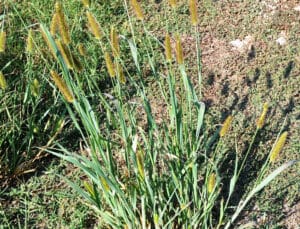Poa Annual
Description
Annual Bluegrass, is a short, cool-season, weedy grass that is very common in the United States. It is a species of Bluegrass that looks bright green or yellow and has white seed heads and a shallow root system. It grows abundantly in the Spring, producing a lot of seeds. It then dies in the hot weather of Summer and germinates during the early Fall, so it can return the following Spring to populate your lawn once again. This weed thrives in cool conditions with moist or compacted soil.
What Causes Annual Bluegrass?
Once a few Annual Bluegrass plants become established in your lawn, they can spread rapidly, due to their prolific and swift seed production. Seeds are spread by mowing your grass too short, watering too much and too often, heavy foot traffic that compromises or compacts the soil, applying too much fertilizer, bird activity or other damage. Annual Bluegrass likes to sprout in bare areas, especially along driveways and walkways. If those areas are damaged with snowplows, cars, or improper String Trimmer Edging, then Annual Bluegrass will inevitably sprout there, or any bare areas in the lawn.
Is Annual Bluegrass Bad?
Annual Bluegrass can become a nuisance, as the bright green grass stands out like a sore thumb and the plant produces a seed head that is capable of producing hundreds of seeds per plant. Additionally, traditional weed control applications are ineffective in getting rid of this weed.
Cultural Control
How To Get Rid of Annual Bluegrass?
There is not much that can be done about the Annual Bluegrass that you currently have. It will die naturally when the weather gets warm. We do have recommendations to prevent it from sprouting in the future.
How To Prevent Annual Bluegrass?
Seed any bare spots in the late Summer or early Fall with a Bare Spot Seed Patch Mix.
- If solitary plants are found, remove them before seed production starts.
- Try an Organic Weed Preventer to suppress new growth before seeds germinate in the Fall.
- Mow your lawn high to shade the soil surface and prevent weed seeds from germinating.
- To thicken your lawn, aerate and overseed in the Fall, which is the best defense against weeds.
- Do not water more than 3-4 days per week, as watering daily encourages weeds to sprout.





